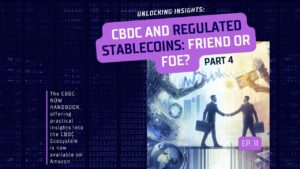This Week: Global Digital Currency Development Updates

The European Central Bank (ECB) officially launches its digital euro innovation platform, inviting 70 organizations to explore potential applications. Participants are divided into two categories: Pioneers, who will work on conditional payments, and Visionaries, focusing on broader societal benefits such as financial inclusion and tokenization. The ECB provides a simulated digital euro environment for Pioneer participants to integrate and test functionalities, offering a glimpse into a potential retail CBDC. The final decision on the digital euro’s official rollout is expected in October 2025, contingent on legislative approval. The ECB emphasizes the project’s significance in protecting monetary sovereignty, reducing reliance on foreign payment systems, and ensuring secure, efficient digital transactions.
Key Takeaways:
- 70 organizations, including banks, fintechs and merchants, are involved in the ECB’s digital euro platform.
- The Pioneers group will work on conditional payments ensuring transactions occur only when predefined conditions are met.
- The Visionaries group will explore broader applications, including financial inclusion and tokenization.
- The ECB is providing a simulated digital euro platform for integration and testing.
- A final decision on launching the digital euro is expected by October 2025, pending legislative approval.
- The ECB views the digital euro as a way to protect monetary sovereignty reducing reliance on foreign payment providers
Kyrgyzstan is set to introduce USDKG, a gold-backed stablecoin pegged 1:1 to the U.S. dollar, in Q3 2025. Backed by $500 million in gold reserves from the Kyrgyz Ministry of Finance, the stablecoin aims to facilitate international transactions, particularly in cross-border trade and remittances, which account for 30% of the country’s GDP. The ministry plans to expand gold reserves to $2 billion and conduct independent audits to ensure transparency and trust. Unlike other gold-linked assets, USDKG is not designed to track gold prices but will remain stable through direct backing and overcollateralization. Initial usage will focus on Central Asia, with future expansion planned into Southeast Asia and the Middle East. Holders can redeem stablecoins for physical gold, crypto assets, or fiat currency.
Key Takeaways:
- USDKG is pegged 1:1 to the US dollar and backed by gold reserves, ensuring stability.
- The Kyrgyz Ministry of Finance supports the project with $500 million in gold, with an aim to expand it to $2 billion.
- Independent audits will be conducted to guarantee transparency in reserve management.
- Designed for cross-border transactions, USDKG will initially focus on Central Asia, with planned expansion into Southeast Asia and the Middle East.
- Unlike gold-tracking assets, USDKG maintains a stable value directly linked to gold reserves and the U.S. dollar.
The Bank for International Settlements (BIS) Innovation Hub and the South African Reserve Bank (SARB) have launched the 2025 G20 TechSprint, a global competition aimed at fostering technological solutions that enhance trust and integrity in scalable financial systems. Under South Africa’s G20 Presidency, this year’s challenge focuses on three critical areas:
- Verifiable Digital Identity Solutions: Privacy-preserving technologies to establish trust among financial institutions.
- Consumer-Consented Credit Data Portability: Secure cross-border credit data exchange to improve SME financing.
- Fraud and Cyber Risk Mitigation: Strengthening security in fast payment systems to promote financial inclusion and economic growth.
Winners for each category in the problem statement will be selected in November by an independent panel, with the chance to win awards up to USD $30,000.
Key Takeaways:
- The G20 TechSprint 2025 focuses on digital identity, credit card portability, and fraud prevention
- Hosted by BIS Innovation Hub and SARB, aligning with South Africa’s G20 priorities of solidarity, equality, and sustainability
- Shortlisted teams will receive $5000 in support, and winners will earn $30,000
- This initiative aims to drive financial inclusion and enhance cross-border trade through fintech solutions
A new BIS Working Paper explores the trends and drivers behind cross-border flows of major cryptocurrencies, Bitcoin, Ether, USDT, and USDC, across 184 countries from 2017 to 2024.
The paper highlighted that while Bitcoin and Ether flows are largely driven by speculative motives and global funding conditions, stablecoins exhibit stronger links to remittance costs and transactional needs, particularly in emerging markets where traditional financial channels are expensive.
Interestingly, the study finds that geographic distance and linguistic barriers have a much smaller effect on crypto transactions than on traditional financial flows. Instead, global factors, such as heightened market volatility and widening credit spreads, emerge as significant determinants for native cryptoassets. Moreover, capital flow management measures appear largely ineffective in curbing digital transactions, with evidence that transactions for some cryptoassets even increase in response to the introduction of these measures.
These findings highlight the dual role of cryptoassets as speculative investments and transactional tools, emphasizing the need for further research to assess their impact on financial inclusion and economic stability.
Key Takeaways:
- Bitcoin and Ether flows are primarily driven by speculative motives and global financial conditions.
- Stablecoins are more closely linked to remittance costs and transactional needs, especially in emerging markets.
- Geographic barriers play a smaller role in crypto transactions compared to traditional financial flows.
- Global factors, such as market volatility and credit spreads, significantly influence native cryptoasset flows.
- Capital flow management measures appear ineffective, with some restrictions even leading to increased crypto transactions.
- The findings underscore the need for further research on cryptoassets’ impact on financial inclusion and economic stability.
The Bank of Israel has launched a technological assessment of its proposed Digital Shekel System, inviting technology experts, academics, and vendors to contribute insights on its design and implementation. This initiative follows the publication of the Preliminary Design for the Digital Shekel, which outlines a multipurpose CBDC aimed at serving both retail users and wholesale financial entities.
The consultation process will focus on six key technological areas:
- Backend Layer: Infrastructure for secure and scalable digital transactions.
- Secure Transaction Messages & Communication: Ensuring encrypted and reliable payment messaging
- Offline Capabilities: Enabling transactions without internet connectivity
- Payment Authorization & Cryptographic Key Management: Strengthening security for digital wallets.
- Alias Management System: Simplifying user identification for seamless payments.
- Fraud Monitoring System: Implementing AI-driven fraud detection mechanisms.
Participants can submit proposals addressing one or more of these areas, helping shape the future of Israel’s digital currency. To facilitate engagement, the Bank of Israel will host a webinar on May 21, 2025, providing further details on the consultation process.
Key Takeaways:
- The Bank of Israel is conducting a technological assessment of the Digital Shekel System.
- Experts, academics, and vendors are invited to contribute insights on six key technological areas.
- The initiative aims to enhance security, scalability, and offline transaction capabilities.
- A webinar on May 21, 2025, will provide further details on the consultation process.
- The Digital Shekel is designed as a multipurpose CBDC, serving both retail and wholesale financial entities.
After stepping away from crypto in 2022, Meta is now reconsidering stablecoin integration for global payouts. The tech giant is in early discussions with crypto infrastructure firms to explore a multi-token approach, potentially supporting stablecoins like USDT and USDC. This move comes as stablecoins gain traction among institutional investors, with the market capitalization surpassing $230 billion.
Meta’s renewed interest in stablecoins aligns with broader industry trends. Payment giants like Visa and Stripe have recently announced stablecoin-related initiatives, signaling growing adoption in mainstream finance.
The timing of Meta’s exploration coincides with evolving US regulatory developments. The GENIUS Stablecoin bill, which aimed to establish a legal framework for stablecoins, was recently blocked in the Senate, highlighting ongoing regulatory uncertainty. Despite this, stablecoins remain a focal point for financial innovation.
Key Takeaways:
- Meta is exploring stablecoin integration for global payouts after stepping away from crypto in 2022.
- The company is in early-stage discussions with crypto firms but has not finalized its approach.
- Stablecoins like USDT and USDC may be included in Meta’s payment infrastructure.
- The stablecoin market continues to expand, attracting institutional investment and regulatory attention.
- Other major payment firms, including Visa and Stripe, have also announced stablecoin-related initiatives.
Coinbase launches x402, a payment protocol designed to enable instant stablecoin transactions directly over HTTP. This innovation allows APIs, apps, and AI agents to transact seamlessly, unlocking a faster, automated internet economy. The protocol eliminates intermediaries, allowing payments to flow directly from users to merchants, making digital transactions as effortless as sending a tweet.
The x402 protocol is particularly beneficial for AI-driven applications, enabling autonomous agents to pay for digital services, such as API usage, online content, and cloud computing resources. By leveraging stablecoins like USDC, x402 aims to create a frictionless payment experience that enhances efficiency and reduces costs.
Coinbase has partnered with industry leaders, including Circle, Amazon AWS, and Anthropic, to support the adoption of x402. The protocol is open-source and released under the Apache 2.0 license, ensuring accessibility for developers worldwide.
Key Takeaways:
- x402 enables instant stablecoin payments over HTTP, eliminating intermediaries.
- Designed for AI agents, APIs, and apps to transact seamlessly in an automated economy.
- Supports USDC and is open to integration with other stablecoins.
- Coinbase has partnered with Circle, Amazon AWS, and Anthropic to drive adoption.
- Released under the Apache 2.0 license, making it accessible for developers globally.





